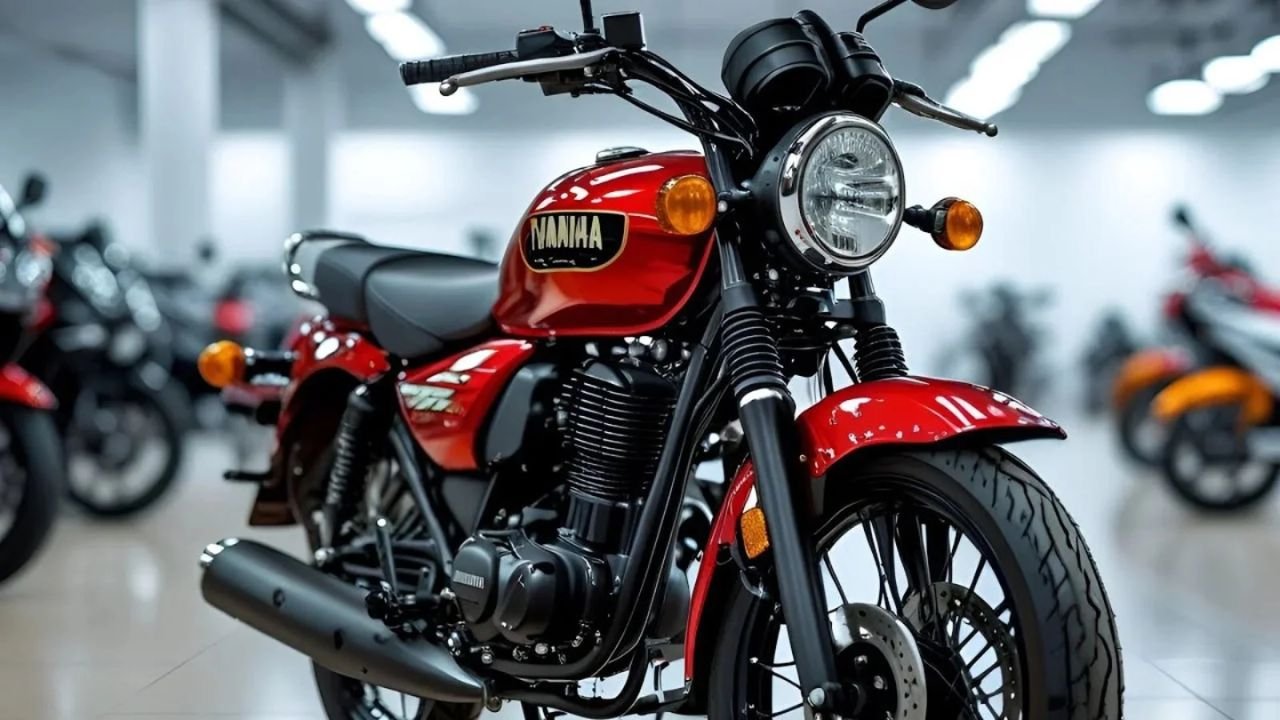The Yamaha RX100 remains a living legend—an iconic motorcycle that redefined performance and style in the Indian two‑wheeler landscape. Even today, decades after its discontinuation, the Yamaha RX100 continues to draw admiration for its unmatched engine note, raw riding feel, and cult status among biking enthusiasts.
Let’s explore why the Yamaha RX100 earned a cherished place in India’s heart, what made it beloved, and why its legacy still thrives—even in 2025.
Why the Yamaha RX100 Became a Cult Classic
When Yamaha launched the Yamaha RX100 in the mid‑1980s, most bikes in the 100cc segment prioritised fuel economy and practical commuting. The RX100, however, flipped the script by offering exhilarating performance, excellent power‑to‑weight ratio, and a thrilling riding experience.
Its 98cc two‑stroke engine delivered around 11 horsepower—unusual for its class. Weighing just about 100 kg, the Yamaha RX100 could blitz from standstill with immediacy. That raspy, high‑revving exhaust note became its signature—pure, visceral and impossible to ignore.
The Yamaha RX100 symbolised youth, freedom, and spirited riding—qualities that modern scooters or commuter bikes simply didn’t deliver.
Timeless Design That Still Turn Heads
Visually, the Yamaha RX100 featured simple and classic styling that remains striking today. A round headlamp, flat single‑seat, beefy fuel tank with bold graphics, chrome mudguards and footpegs—it never needed flashy LEDs or plastic fairings to stand out. Its understated flare was pure retro charm.
Ergonomically, the RX100 offered a relaxed yet engaging posture—upright handlebars, firmly sprung seat and pegs that struck a balance between comfort and sportiness.
Even in 2025, restored RX100s garner nods of respect—proof that timeless design endures beyond shifts in trends.
Core Features That Defined the Yamaha RX100
The Yamaha RX100 didn’t boast modern instruments or disc brakes, but it nailed the essentials through excellent engineering and thoughtfulness:
- 98cc two‑stroke engine tuned for instant throttle response and spirited acceleration.
- Extremely light curb weight (~100 kg) for razor‑quick handling.
- 4‑speed manual gearbox with precise, engaging shifts.
- Adequate drum brakes on both wheels, delivering balanced stopping for that era.
- Basic, rugged telescopic front forks and rear twin‑shock suspension.
These traits combined into the RX100, a nimble and responsive machine, eager to play at any twist of the throttle.
Also Read – Tata Sumo 2025 Returns: A Bold 7-Seater SUV with Diesel Power, New-Age Features & Pocket-Friendly EMI Plans
The Enduring Legacy of the Yamaha RX100
Though production ended in 1996 due to emission regulations, the legend of the Yamaha RX100 only grew stronger. Revival models, restoration communities, and custom builds proliferated. Today, a well‑restored RX100 can fetch ₹1 lakh or more, depending on condition and originality—proof that collector demand remains high.
Local drag races, retro rides and club meets still showcase the Yamaha RX100 as a symbol of pure biking—free from electronic trappings, relying instead on rider skill and engine character.
Why Discontinuation? Emission Norms & Market Shifts
The Yamaha RX100 thrived on a two‑stroke platform, but tightening emission norms in the ’90s made these engines untenable. Air pollution concerns and fuel standards forced manufacturers to shift toward cleaner four‑stroke engines. Yamaha duly discontinued the RX100, marking end of an era—but planting the roots of its cult status.
That absence only romanticised the Yamaha RX100 further. Without an official rebirth, it remained a relic of emotion—untainted and untouched by modern compromises.
Can You Still Buy a Yamaha RX100 Today?
There’s no factory‑new Yamaha RX100 in 2025—but restoration and second‑hand markets are alive. Buying one requires care:
- Look for original engine casings, carburettors, exhaust and frame to retain value.
- Check restoration quality: paint finish, chrome parts, electrical rewiring, and rebuilt engine.
- Expect prices range from ₹40,000–₹60,000 for runner parts-bikes, ₹80,000–₹1,20,000 for showroom‑ready models.
- Be aware of spares—while aftermarket support exists, finding OEM parts can be tricky.
Owning a RX100 today is a labour of love—but for many, that’s part of its charm.
FAQs About the Yamaha RX100
Q1. Is the Yamaha RX100 good for daily use in 2025?
It’s possible—but its older two-stroke engine doesn’t match modern fuel efficiency. Maintenance can be frequent, and genuine parts may be scarce. Still, many riders enjoy it as a weekend machine with modern upgrades like disc brakes or Euro-II compliant engines.
Q2. Can you register a Yamaha RX100 today?
Yes, if it has valid ownership documents, insurance, and passes pollution tests (depending on local norms), a RX100 can remain road-legal. Watch for city restrictions on pre-2000 vehicles.
Q3. Why do people still love the Yamaha RX100?
Its simplicity, light weight, unique engine roar, and nostalgic charisma create emotional connections—across generations.
Q4. Is it expensive to maintain a Yamaha RX100?
That depends on the condition. Modified or rebuilt versions may need rebuilding yearly. But clubs and enthusiasts share tips, making DIY upkeep feasible.
A Modern Take: What if Yamaha Revived the RX100 Today?
Imagine a modern Yamaha RX100: updated to Euro 5 norms, featuring:
- 100cc four‑stroke Single Overhead Cam engine
- Fuel injection for cleaner emissions
- Disc brakes front and rear
- LED lighting + basic digital instrument cluster
- Retro styling that pays homage to the original
- Still-price-friendly (₹80,000–₹90,000) for urban buyers
Such a bike could capture retro‑modern appeal and revive the legend in a fresh avatar. For many, the RX100 revival dream is more than a fan wishlist—it’s a natural next step.
Why the Yamaha RX100 Still Matters Today
- Emotional Value: It’s not just a motorcycle—it’s nostalgia on wheels.
- Riding Feel: Manual, no-ABS, mechanical engagement—pure rider’s experience.
- Rarity Premium: Restored units command respect at shows and meetups.
- Classic Appeal: It stands out in a world full of plastic and technology.
- Community Support: Passionate owners and workshops help keep the classic alive.
Final Thoughts: The Yamaha RX100 Lives On
The Yamaha RX100 is not just part of India’s two-wheeler history—it’s rooted in its culture. It represents a time when riding was visceral, designs spoke for themselves, and performance spoke loudest through exhaust notes.
If you ride a RX100, you’re riding history—a machine that refuses to become invisible, even in the tech-dominated era of 2025. And if you ever get the chance to own or ride one, know this: you’re sharing a legacy.
Quick Summary Table
| Feature | Detail |
|---|---|
| Engine | 98cc two-stroke, ~11 HP |
| Weight | ~100 kg |
| Fuel Efficiency | 25–30 km/l (tuned) |
| Brakes | Drum front & rear |
| Production | 1985–1996 |
| Legacy | Iconic Indian motorcycle |
| Price (Restored) | ₹40,000–₹1,20,000 |
| Appeal | Performance, nostalgia, uniqueness |
In conclusion, the Yamaha RX100 is no ordinary motorcycle; it’s a symbol. A blend of simplicity, mechanical purity, and emotional resonance. For riders who want stories alongside acceleration, it continues to deliver. And for those who feel motorcycles have lost soul, the Yamaha RX100 remains proof that the classics are forever.
Some Important Link
| Download News APP | Click Here |
| WhatsApp Group | Click Here |
| Home Page | Click Here |
















